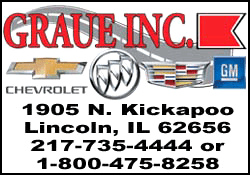|
 Cambridge-based Owlstone Medical has developed a microchip sensor
technology to measure the volatile organic compounds (VOCs) in
patients' exhaled breath. Breath testing is already a recognized
method for linking specific VOCs in exhaled breath to a certain
medical conditions, but current techniques are often expensive, slow
and complex to use. Cambridge-based Owlstone Medical has developed a microchip sensor
technology to measure the volatile organic compounds (VOCs) in
patients' exhaled breath. Breath testing is already a recognized
method for linking specific VOCs in exhaled breath to a certain
medical conditions, but current techniques are often expensive, slow
and complex to use.
Co-founder and CEO of Owlstone Medical Billy Boyle said their device
is much smaller and cheaper than existing technologies; potentially
making it a viable tool for doctor's surgeries.
"Historically chemical analyzers take up half the size of a room and
cost half a million dollars. So what we've been able to do is use
microchip technology to shrink it down from these massive devices to
something about the size of a button. And once it's in that form
factor, you can build it directly into these disease breathalyzer
technologies," Boyle told Reuters.
Boyle said their sensors were originally developed for detecting
explosives and toxic gases but were re-programmed to identify the
chemical markers of diseases, with a lung cancer breathalyzer the
first to reach clinical trial.

Lung cancer kills about 1.5 million people a year, according to the
World Health Organization, and is the leading cause of cancer death
across the world. Only about 10 percent of patients live more than 5
years, in part because the disease is usually diagnosed too late.
However, the chemical markers of lung cancer are present even in the
earliest stage of the disease. Owlstone Medical says their
breathalyzer can pick out these minute traces of cancer, meaning
current treatments can be administered with a much greater chance of
successfully curing the disease.
Boyle said that if the disease is detected early existing treatments
work more effectively.
"The challenge is most people present when it's very late stage, and
it's about managing symptoms as opposed to curing them. So the key
thing that you can do is detect the disease early; and that's what
we think the breathalyzer technology allows for," he said.
Developed over 10 years with 28 million dollars (USD) of investment,
the device can detect and identify multiple chemicals in a gas flow
at very low concentrations, typically parts per billion. Patients
wear a breathalyzer mask and breathe normally for several minutes
while the sample is collected.
Dr. Robert Rintoul, from Papworth Hospital in Cambridge, where one
of the devices is undergoing clinical trials, said the quick,
non-invasive breathalyzer could be an important tool for doctors to
help determine if high risk patients should be referred for testing
in hospital.
[to top of second column] |

"If you have a lung cancer inside your lung, that cancer is
producing a range of chemicals in very, very minute amounts. And
this device can collect those samples, those tiny amounts of
volatile organic compounds, which we can then analyze in the
laboratory. And in effect, it's a bit like a fingerprint. If you
have a lung cancer we believe that we can detect these samples and
that fingerprint will tell us whether the person has lung cancer or
not," said Rintoul.
The breathalyzer is also being tested at 16 other hospitals, the
largest trial of this type ever conducted.
The clinical study will involve up to 3,000 people who are due to
have a biopsy because there is a concern that they may have lung
cancer. Prior to having the biopsy, breath samples will be collected
from the patients. Once the results of the biopsy are known, doctors
will be able to validate the chemical markers they detected in the
breath as being lung cancer.
"We've now started putting this into clinics so patients who are
coming through and getting other types of tests can provide a breath
sample so you can match the two; the tests that are currently used
today with what you pick up in the breath. And at the end of that
process you have a clinical trial result which means you can start
to use it in clinic," said Boyle.
He added that their sensors could one day be used directly by
patients if the technology was adapted into a handheld device or
built in to a user's smart phone.
"The chip today is already incredibly small, so it's not that hard
to envisage how you could put it not only into GP's surgeries, but
also into other places where sensor technology can be used directly
by patients, by consumers - so they can take control of their own
health data and their own health destiny."

In the UK there are about 45,000 new cases of lung cancer each year,
costing the Nation Health Service (NHS) 2.5 billion pounds ($3.6
billion). Owlstone is aiming to save 10,000 lives and save the NHS
245 million pounds a year with early detection of the disease using
their technology.
[© 2016 Thomson Reuters. All rights
reserved.] Copyright 2016 Reuters. All rights reserved. This material may not be published,
broadcast, rewritten or redistributed. |